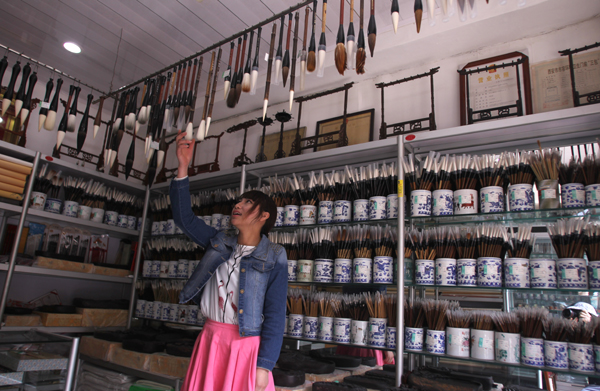Chinese calligraphy in touch-screen age
By SATARUPA BHATTACHARJYA ( China Daily ) Updated: 2015-05-09 09:42:17
 |
|
Zhou Qing adjusts a calligraphy brush in her shop. Zou Hong / For China Daily |
Wang Minghu, the elderly deputy director of China Calligraphers Association, a Xi'an-based civil entity, is crouched over a big piece of white paper with a brush in hand. After submerging the brush in black ink contained in a pot on his table, Wang continues to write a poem by New China's founding father Mao Zedong, adjusting his glasses now and then.
Chinese calligraphy, which is more than 3,000 years old, is a vehicle of traditional culture, Wang says. "It will not be abandoned by future generations."
A museum of calligraphy that's located on one end of Shuyuanmen, draws many out-of-towners as evidenced on a weekday last month, seemingly underscoring Wang's opinion.
But the question remains: How much of the writing tradition will young Chinese likely inherit?
Zhao Xueqing, a veteran linguist from the city isn't too worried about the debate because schools in China still insist on children learning handwritten characters for the first six years of their education, at the least. The country's successive governments have also been active in preserving calligraphy, he says.
"Young people are doing OK," says Zhao, deputy dean, College of Chinese Language and Literature, Shaanxi Normal University.
|
|
|
|
|
|
|
|

























 Raymond Zhou:
Raymond Zhou: Pauline D Loh:
Pauline D Loh: Hot Pot
Hot Pot Eco China
Eco China China Dream
China Dream China Face
China Face






